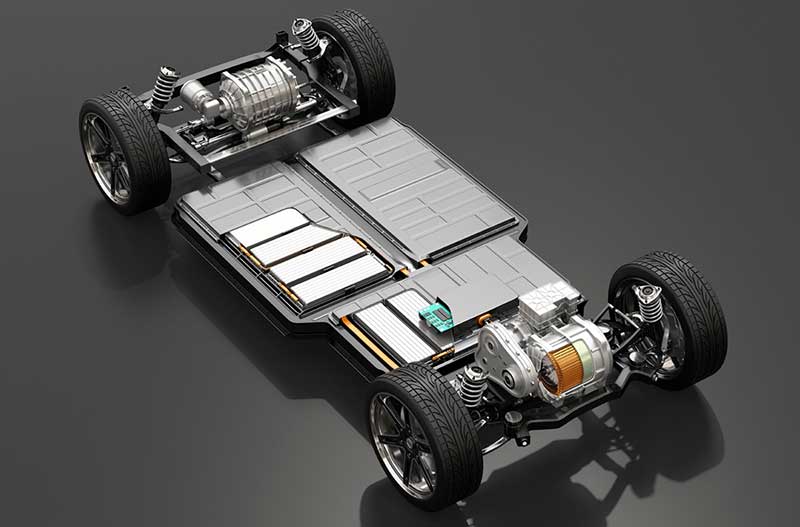- User registration is required to download the materials.
The usage registration form is Click here - Please enter the following items. Go to the download page.
-
A need to increase the size of EV batteries has exposed various issues with the covers and trays, including risk of leaks and the sheer weight of an entire battery case. …
How can Teijin Automotive Technologies help OEMs address these challenges ?
Auto manufacturer X / Design and Development -

Background
The Design and Development Department of Company X started designing and developing a new electric vehicle (EV). To extend the cruising distance by 50% compared to the current model, the vehicle must carry a larger number of Li-ion battery cells, which makes it difficult to design their battery case. Every day, the design and development team made efforts through trial and error.
Issues
Planning the development of a large battery enclosure brings about many problems, from selecting raw materials to design, engineering, sealing and manufacturing. …
The Design and Development Department thought that extending the cruising distance would require increasing the number of Li-ion cells, which would in turn require a larger battery case. This exposed various issues, hindering progress in the design.Looking back on those days, Mr.O of the Design and Development Department, who is in charge of the cover parts, said, ”Manufacturing a cover made of metal, the conventional material, that would fit the larger battery case, but also increase the weight, which would in turn consume more power and reduce the cruising range of the vehicle. In addition, the cells need to be piled up in layers due to the design of the body, which makes the shape of the cover complicated, and not something that could be formed from a metal. Additionally, it would be difficult to protect this metal cover from corrosion and punctures.
Under these circumstances, the team also considered using other raw materials. Through investigation after introduction by other companies, they repeated their prototyping and evaluation using some of the candidate materials. As the result of their evaluation, they determined that GF-SMC, a thermosetglass fiber reinforced plastic, was the most promising candidate to replace metal.
However, the team in charge of cover parts had no experience in designing parts using GF-SMC and looked for a development partner with whom they could consult from the design stage.
- Points on the Issues
-
- Increasing the number of Li-ion battery cells to extend the cruising distance raises the weight of a conventional metallic cover, thus actually reducing the range.
- Due to the design of the body, the battery cells need to be piled up, which makes the shape of the cover complicated and one that cannot be formed using metals. Additionally, it would be difficult to protect this metal cover from corrosion and punctures.
- Through an investigation of other raw materials, GF-SMC was found to be the most promising candidate. However, the team had no experience in designing parts, and their highest priority was to find a development partner.


